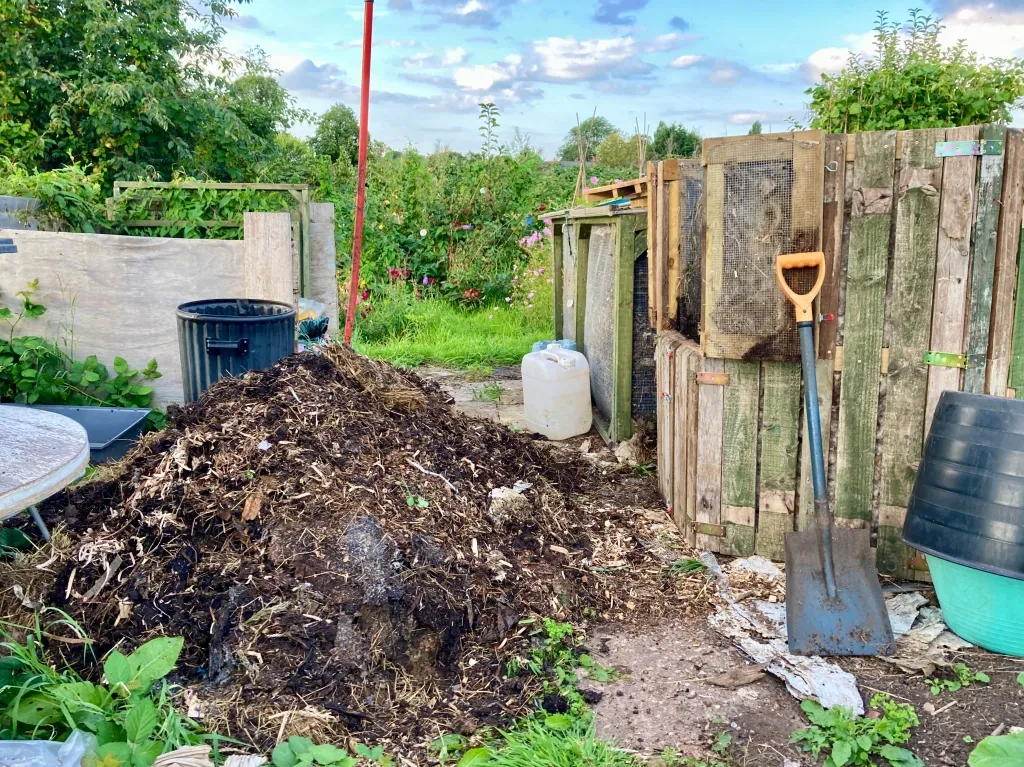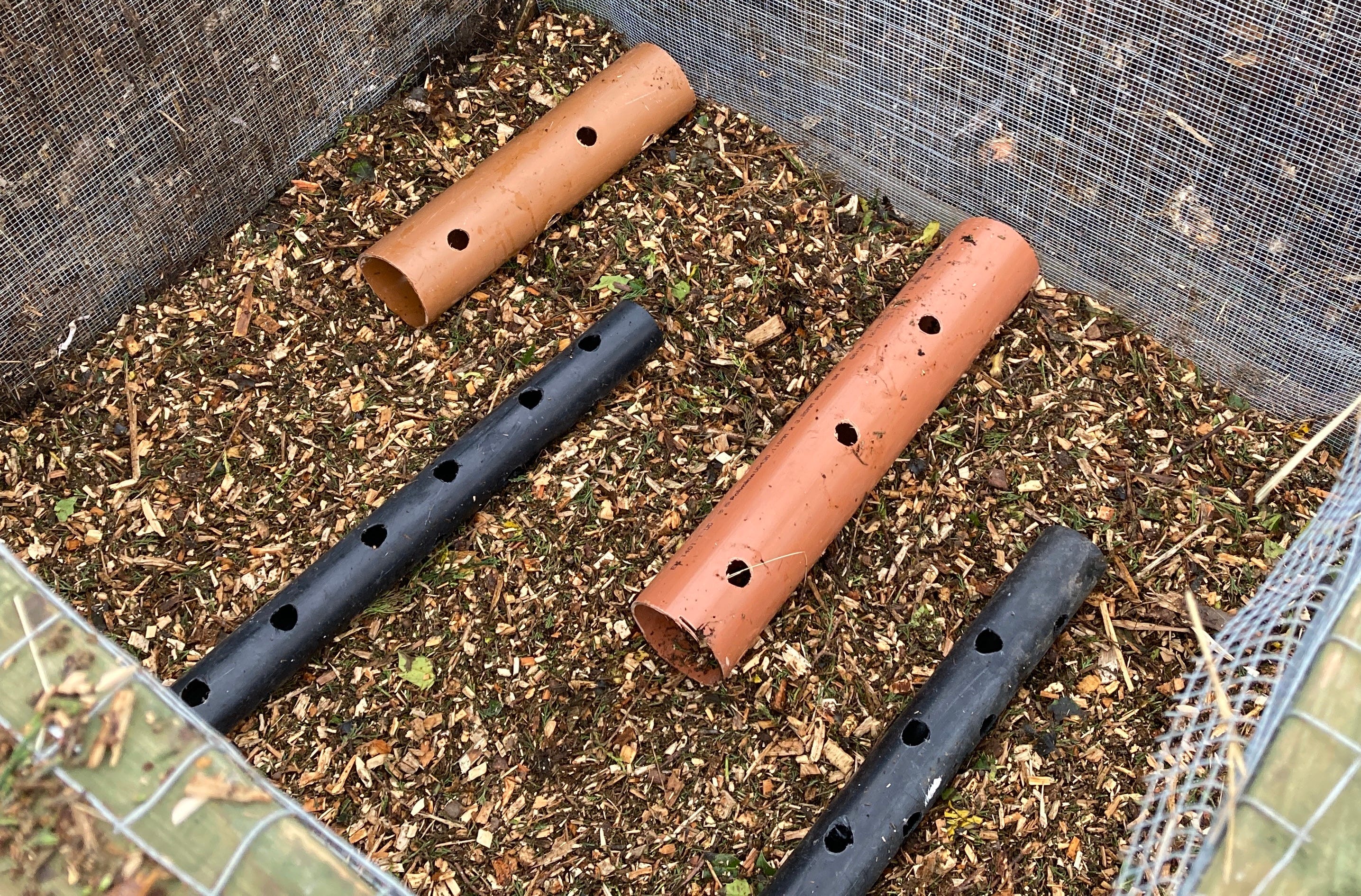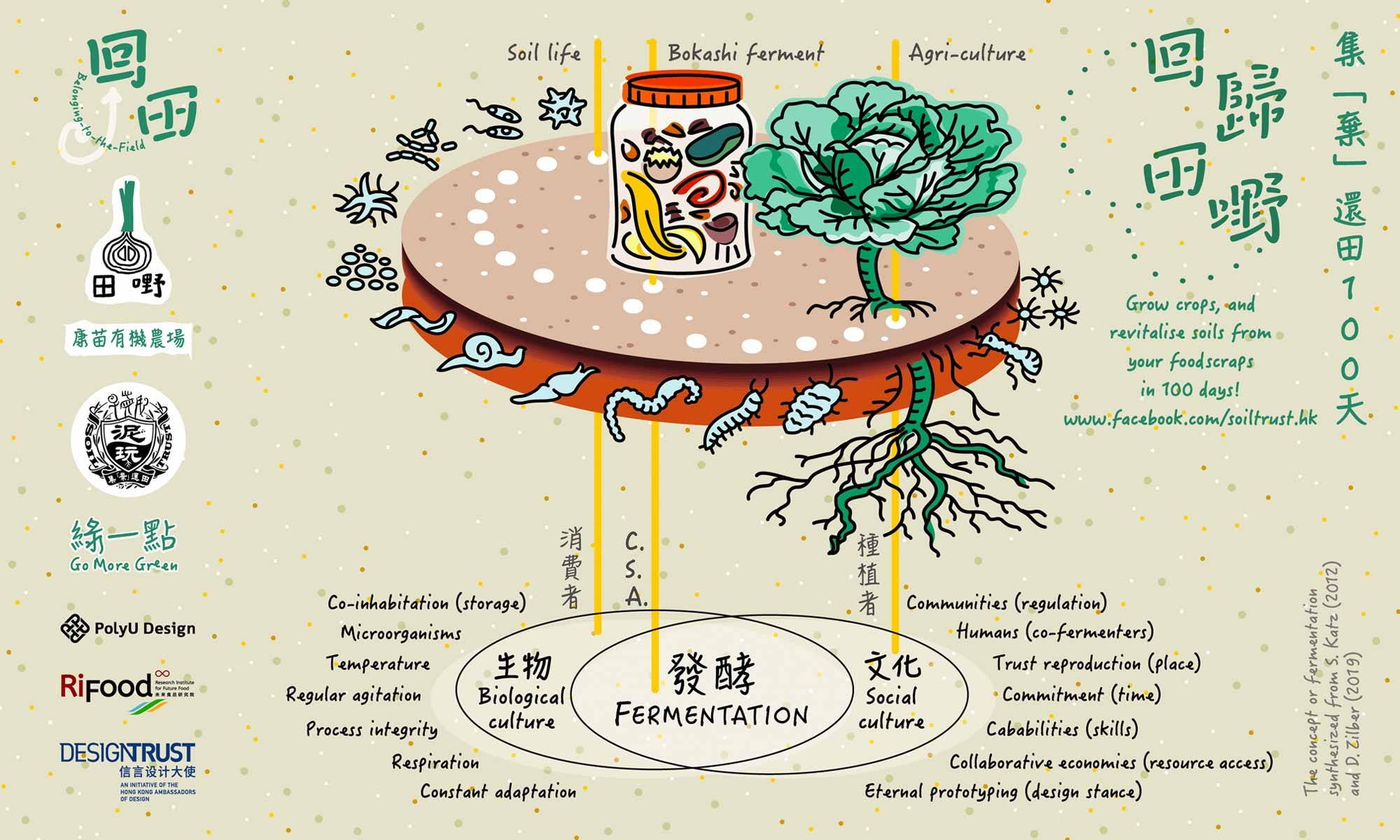The first Aerobic Digest
You have to start somewhere. Here is where it starts.

I start a fresh heap with a decent layer of wood chip into which I place three or four short pieces of drainpipe, about 60cm long, into which I’ve drilled a bunch holes. The pipes run from the side mesh of the heap structure to the middle, drawing fresh air into the core of the heap.

These are then covered in more wood chip so the holes don’t get clogged, and we’re ready to start properly.
My input streams are pretty constant. Our rabbits give me a big sack of dirty hay and poop once a week, the allotment gives me weeds through the summer and finished plants in the autumn, my small network of eight bucket-fillers give me their kitchen scraps and I raid the food waste bin at the bakery where I work for veg peelings and and stale bread that didn’t make it to the food bank. If the inputs are dry I add water. I top this off with woodchip from the communal allotment pile to keep the smells under control and a good few litres of my own urine, because of course I do. It’s a weekly job and I record any unusual additions and changes as I go.
I’ve begun to see composting as a metaphor for pretty much everything, so it makes sense to approach this newsletter in the same way. Every week or so I will add some stuff to the mix - a video I’ve liked, an article that taught me something, a conversation with a fellow enthusiast, a report from elsewhere, an experiment which worked or failed interestingly. I’ll also be asking my fellow mulch-nerds to contribute their stories and ideas. After a decent period of time there’ll be a pile of stuff which you, the reader, will have added to the other stuff you read and watch and built your own connections. I hope it feeds your mind, accelerating the grown of new ideas which, once you’ve harvested them, can be added to your own pile. (If you have your own internet pile, be it a blog, video channel, social media thing, or whatever, and it’s about composting, let me know.)
That’s probably my favourite thing about composting. We throw a load of ostensible rubbish in a pile and stuff happens to turn it into nutritious plant food. We can guide the process by controlling the mix, keeping the bad stuff out and maximising the good, but ultimately it’s out of our control.
Hopefully that sets a decent tone for this endeavour. As Ze Frank once said, let’s start this shit up.

Video: Making compost at scale
Get past the somewhat hyperactive intro from Jesse and this two-parter has quickly become one of my favourite composting videos, because despite the scale it all feels so achievable. Most of the large-scale setups I see are dauntingly industrial but this just uses a large plot of land and a digger to turn it. Even the pest control solution is inspiring – they left some dead trees standing so the local birds-of-prey can spot any rats and kill them. Part one, part two.
Art: Markus Wernli

I was telling my artist-friend Nikki about my recent conversion to the cult of composting and she suggested I check out Markus Wernli who has a research-based practice in Hong Kong. The first project on his website, Soil Trust, is the most obvious overlap with my interests, but there’s plenty to deep-dive around rethinking waste, particularly human waste.
Education: Argent College’s rooftop garden
I came across this project when someone sent Hunt Emerson’s posters to the local composting WhatsApp group. I’ve loved Hunt’s work since I was a kid in the 80s so was excited to see him drawing my latest passion.

Argent College is part of the Ruskin Mill Trust - an educational charity for young people with autism - based in Birmingham’s Jewellery Quarter. They have a rooftop garden with a Ridan “Dragon” composter. There’s a good case-study report on the Ridan website which goes into more details.
I’m intrigued to see the worm farm in the basement. My instinct is that the worm stage of the process should be in contact with the soil, but this isn’t the first time I’ve seen it done indoors. It makes a lot of sense and I’m sure it smells really nice in there.
That’ll do for now! The Aerobic Digest will return in a period of time yet to be determined but no sooner than a week and definitely within the month.
Pete